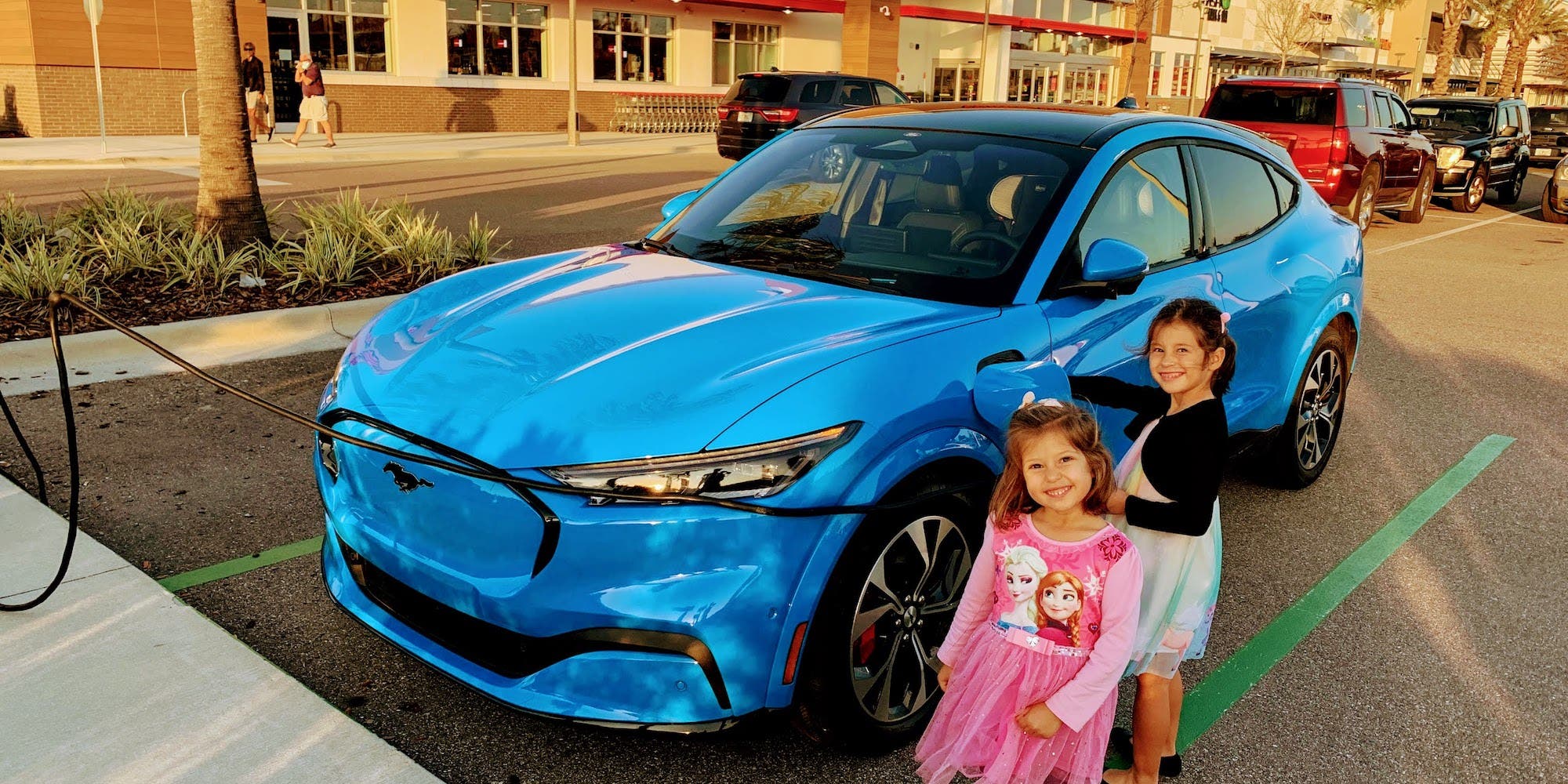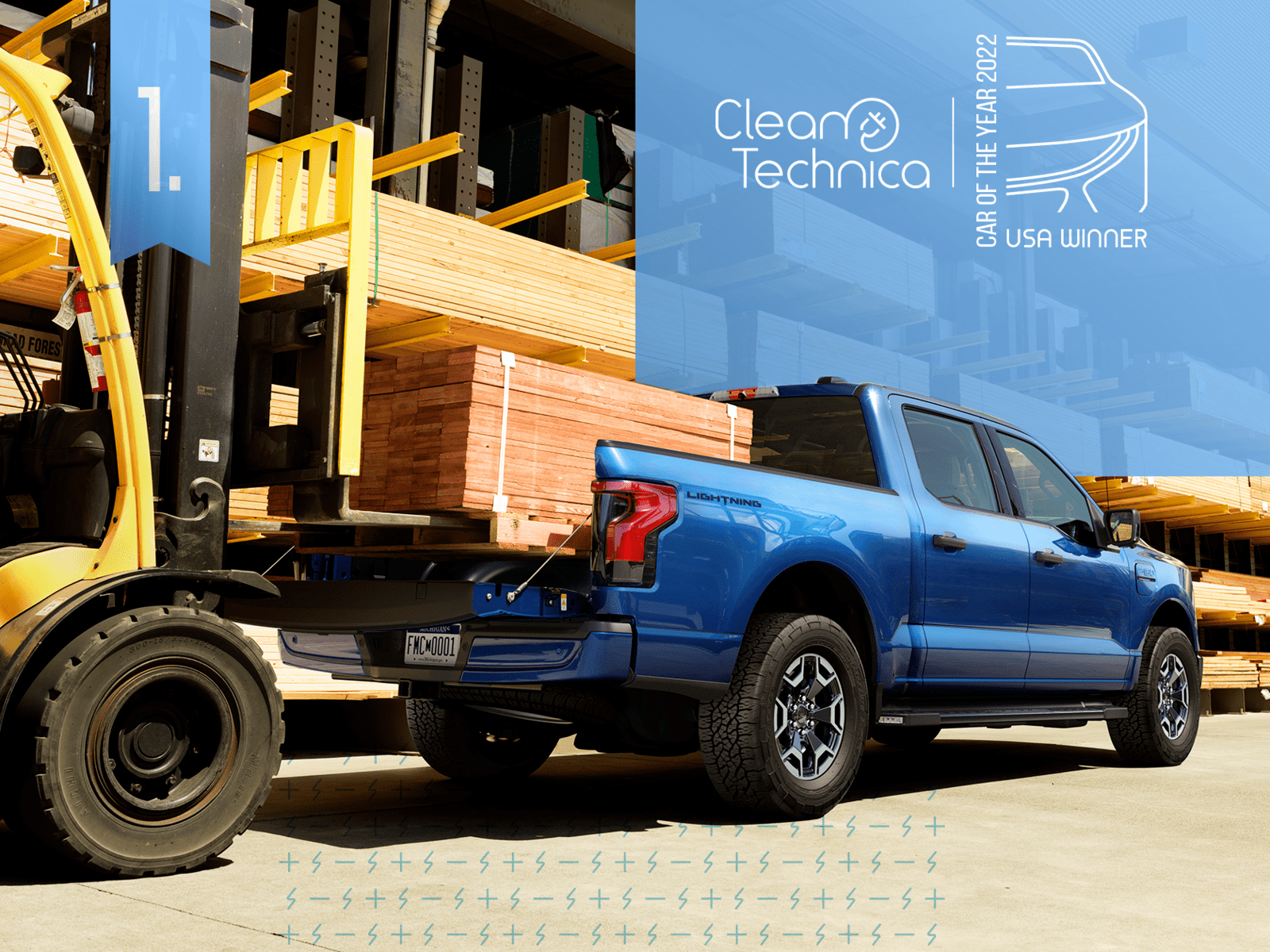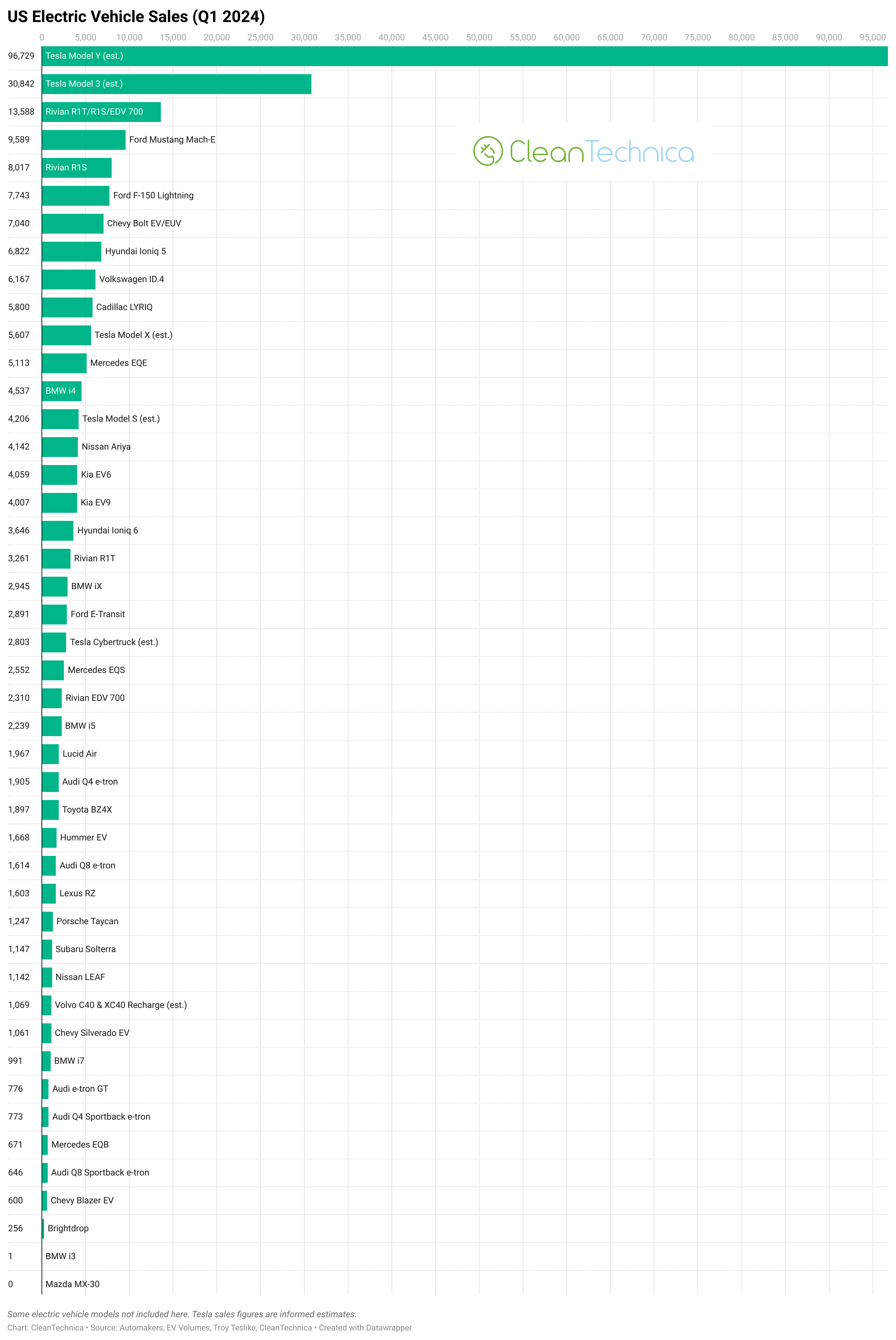Sign up for daily news updates from CleanTechnica on email. Or follow us on Google News!
We published an article the other day portraying Ford CEO Jim Farley as having just woken up after a long multi-year nap, particularly regarding Chinese electric vehicles and the EV transition. Having covered Ford quite closely over the past several years, and having talked to Ford reps about these and related matters, I have a different take on it. I’m going to explain that here, but I also plan to dive deeper into the company and its EV work in the coming week or so to talk about where it goes from here.
First of all, I think there are different matters at hand, and sometimes these need to be clearly separated in order to analyze them well. For one, you’ve got the basic awareness of EV benefits, of EV learning curves, and of why EVs are the future of personal automobiles. Some executives in the auto industry are on the same page as most of you and me on these things, some are not. Secondly, at legacy automakers, you’ve got the challenge of how to approach that transition — how to time the phasing out of fossil-powered cars, SUVs, and trucks and the phasing in of electric cars, SUVS, and trucks. That’s a global challenge for large automakers, but it’s also more pointedly a challenge that must be addressed differently in different regions. You can combine all of these things in one narrative, but sometimes the analysis can conclude that a company is doing well in one area but not so much in another area. Of course, there’s even much more nuance if you dive down into the details of different paths.
In this piece, I’m focusing on Jim Farley and his leadership at Ford. I’ve written many times that I think he’s one of the best CEOs in the legacy auto world and has done a good job at Ford with their electrification efforts. I’ve got some nits to pick this year, but I honestly feel like I need to learn a lot more about internal challenges at the company in order to cover what is happening with a broad enough perspective. I’ll come back to that. In Jim Farley’s time as the CEO of Ford, though, I’ve seen many things to praise, and I’ve given that praise. I’m going to revisit some of those points, and also going to bring in more, in order to explain why I think Farley has been more of a leader than a laggard in the legacy auto world. I’m tempted to go chronologically here, but instead I’m going to go through my personal chronological history of watching and covering Ford before bringing in a couple more points.
Way back in the day, when the Nissan LEAF was the EV market leader, Ford’s foray into electric vehicles was the Ford Focus Electric, a rather lame “compliance car” attempt at an EV. I remember a video showing how they just came up with the idea for where to place the batteries by sticking some cardboard boxes in the trunk. Needless to say, the Ford Focus Electric was not a top seller. Ford’s Energi models, plug-in hybrid competitors to the Chevy Volt, had extremely little electric range due to their very small batteries. They sold in better volumes, but they weren’t good EVs. Therefore, Ford was widely ridiculed by electric enthusiasts, and plenty of times by us here on CleanTechnica. Even as the market developed and matured, not much changed at Ford for several years.
Then, at the end of the decade, the Ford Mustang Mach-E arrived. I’ve talked and written at length about why the Mustang Mach-E was one of the first serious electric efforts in the US, one of the first genuinely competitive EVs aimed at learning from Tesla and even trying to do some things better. Ford’s leadership team was willing to overcome legacy automaker hubris, concede that Tesla was leading on EVs, and then try to create a Tesla-like competitor. Not only that, but Ford gave the new EV its most cherish model brand (Mustang). The company even had the bravery to put that in the crossover category (the most popular category on the market) while incorporating traditional Mustang design elements through brilliant creativity. I and others on our site wrote extensively about why we thought that was a brave, courageous, smart move. And, to my surprise, Jim Farley saw and liked some of those stories on Twitter, which eventually led to us testing out one of the first four Mustang Mach-Es in the US for a week. I’m not going to go on about the Mustang Mach-E, because I’ve done that plenty of times elsewhere, but I do actually think it’s the best looking EV on the US market (as I wrote in some comment threads here on CleanTechnica in recent weeks). I still think it’s one of the best options on the market and regularly recommend it. It’s also been the third best selling electric model on the US market this year, only trailing the Tesla Model Y and Tesla Model 3.
“Jim was a driving force behind the Mustang Mach-E launch in 2018,” Ford tells me. “China was a big inspiration, particularly around the tech interface. Darren Palmer, who is now the VP of Ford ‘s electric programs, had penned his thoughts on a Medium post as well highlighting learnings from China in 2018.” I don’t think I knew back then that Farley was a driving force behind the Mach-E, but I do recall interviewing Darren Palmer. Ford had decided to go an atypical route. They set up a small EV team (codenamed “Team Edison”) and let them go free, treating the team like an external startup that had one mission: create the best EV they could create. That is why Ford leapt forward on EVs, incorporating a large touchscreen, exhilarating power, long range, stunning design, and an overall competitive package. (That was beyond and better than what I had seen GM, Toyota, Honda, or others do.)
Ford had a special challenge: it had to either convert mainstream Ford buyers to EVs, or it had to take EV enthusiasts from Tesla. Neither task was easy, and the ensuing years have shown that. By some standards, as I already noted, the Mach-E is a sales success. However, compared to the Tesla Model Y, it’s not even close. I honestly don’t put that on Farley. I don’t see how he could have done much better. Notably, dealers, which are independent from Ford of course, have been reticent about EVs and it’s been a struggle getting dealers to promote EVs, getting them to tool up and hire the necessary expertise for selling and servicing them, and getting them to sell EVs at very high volumes. However, Ford pushed. Ford pushed in multiple ways. The company, under Farley’s leadership, offered carrots and sticks.
Then there was the Ford F-150 Lightning, which I thought was a smart and aggressive move. Tesla was going to be bringing the Cybertruck to market, and Ford got the Lightning out much earlier with solid capability and pricing. Again, the F-150 Lightning could be considered a success, but it’s true that Ford still doesn’t have the huge electric vehicle demand that Tesla has, and the sci-fi Cybertruck is now outselling it. Though, I wouldn’t bet against the Lightning winning in the long term. I wouldn’t necessarily bet on it, either, but I’m not writing it off yet. Again, though, I took it as a positive sign that Ford electrified its most popular model, backed it, promoted it in smart ways, and tried to get dealers onboard.
Now, there are big challenges at Ford — like other legacy automakers — when it comes to transitioning to electric vehicles. I don’t think Farley has been flawless. Despite a strong start, he started talking about consumer demand not being as high as expected at the end of last year. He contributed to a growing narrative that I think is counterproductive in that regard. Earlier this year, I pointed out that despite that narrative, Ford had sold almost 100% more EVs in the 1st quarter of 2024 than in the 1st quarter of 2023 in the USA. I think Ford could have highlighted and pushed that out much more. I’d rather see a continued strong push on pure EVs than a pullback and redirection to hybrids, but that’s a different matter and doesn’t relate to Ford’s or Farley’s deeper history on EVs and his trip to China, which was what this article was initially about.
Going back to the Farley quote Michael Barnard focused on to kick off a metaphor of Farley being asleep before that 2023 trip to China, this was reportedly the line:
“John, this is an existential threat,” Farley told Ford board member and former Goldman Sachs executive John Thornton after his trip.
My initial thought isn’t that Farley had just discovered this. It’s that Farley was trying to use this opportunity to impress the point on others in leadership. I see this kind of approach as an effective way Farley has communicated other matters in order to press for change. When Ford became the first legacy automaker to join Tesla’s Supercharging network (er, the North American Charging Standard) — a clear EV leadership move — he used a story of being on a road trip and his kids asking why they couldn’t use those Supercharger stations they kept seeing along the way. At the time, I praised Farley for swallowing his pride and making a courageous leadership move that we had been pushing for some automaker to make for several years.
But I didn’t know how much Farley had not only been learning from Tesla, but also from the Chinese market. “Under Farley’s leadership, the skunkworks team in California was set up two and half years ago in response to the Chinese OEMs,” a Ford rep told me today. Furthermore, “Ford is the first OEM to license technology from CATL to manufacture LFP batteries in the US. You can read more of it here.”
Again, I don’t see this China trip as a wakeup call for Farley. I see it as him trying to make his case for why Ford has to keep focusing on EVs and trying to lead on EVs in the US. That’s just my take. Others are free to be more skeptical, but that’s not how I’m seeing this.
From Team Edison and the Mach-E, the first EV on the US market to really follow the “smart EV” path of Tesla and Chinese OEMs; to the Ford F-150 Lightning, the first electric pickup — and a very capable one — on the US market; to the breakthrough Supercharger partnership that broke down the floodgates to improve EV charging access for non-Tesla EVs in the US; to the CATL deal; Ford has been an EV pioneer under Farley’s leadership.
Regarding China, by the way, it’s not the biggest legacy automakers that have led the transition. BYD is the only one you might put in that category, but it was a battery company before anything else and has risen up the list thanks to its strong EV approach. Otherwise, it’s been EV startups that have largely led the way. Again, there are just fundamental challenges legacy automakers face that younger EV companies don’t.
I think it’s extremely hard for legacy automakers to navigate the transition to EVs, as Volkswagen has also been showing lately, and I’ll get into that more again soon. It’s even more of a challenge when you’re heavily based in the US market, as there isn’t the push or pull here as there is in China and Europe, markets where Ford just doesn’t have nearly the presence or market share. Given its challenges, Ford has been the legacy automaker I’ve been happiest with in the US in recent years, so I can’t agree that Farley has been asleep, and I’ve said so many times.
Before getting into a more nuanced discussion of the situation now and into the future, though, let us know down in the comments if you have more thoughts on this. There were a lot of good comments on that original article, including a couple that I definitely plan to use in my next piece on this topic.
Have a tip for CleanTechnica? Want to advertise? Want to suggest a guest for our CleanTech Talk podcast? Contact us here.
Latest CleanTechnica.TV Videos
CleanTechnica uses affiliate links. See our policy here.
CleanTechnica’s Comment Policy








